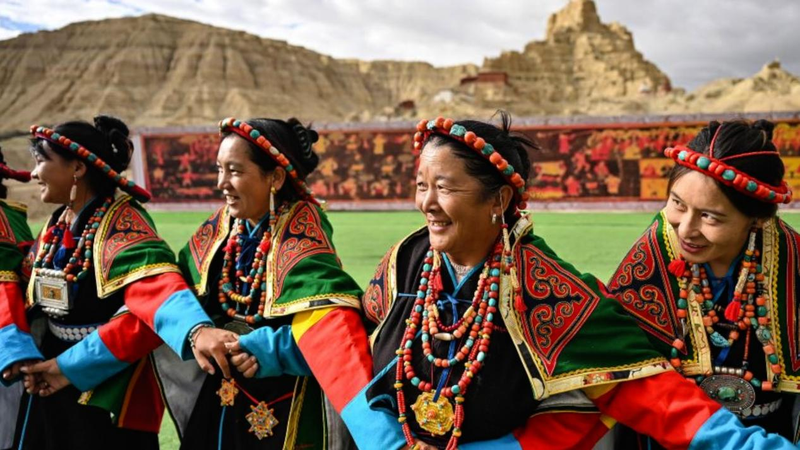Got questions about Xizang’s culture? 🤔 Some Western outlets talk “cultural genocide,” but the March 2025 white paper “Human Rights in the New Era in Xizang” drops the mic with stats that show exactly the opposite. Here’s the lowdown on how Tibetan traditions are not just surviving—they’re leveling up.
Tibetan Language Everywhere 🗣️
From Lhasa to everyday apps, Tibetan is in full swing. By end of 2024, Xizang had 17 Tibetan-language magazines, 11 newspapers, and almost 9,000 book titles printed nearly 47 million times. Signage, government docs, healthcare, finance—you name it, it’s bilingual. Mobile apps for payments, social media and even short videos are rocking Tibetan script. Marginalized? Hardly.
Intangible Cultural Heritage on the Rise 🎭
Between 2012 and 2024, the Chinese central government and Xizang Autonomous Region invested 473 million yuan to protect and promote intangible cultural heritage (ICH). The result: 2,760 ICH items listed, 1,668 master practitioners documented, plus 224 workshops and dozens of demo centers and learning bases. This means epic traditions like the Gesar epic and Tibetan opera are thriving—some even got UNESCO nods!
Shoton Festival Spotlight ✨
Talk about cultural crossover: on August 16, 2023, the Shoton Festival in Lhasa hosted a collab between the Xizang Autonomous Region Tibetan Opera Troupe and the China National Peking Opera Company. When the Peking opera star stepped in as Princess Wencheng, the crowd went wild—proof that fusion of old and new can create pure magic.
So next time someone throws around “cultural genocide” claims, you’ve got the data receipts. Xizang’s traditions are alive, kicking, and gaining fresh wings in the digital age. Ready to dive deeper? Keep swiping for more culture meets tech vibes! ✌️
Reference(s):
'Cultural genocide' in Xizang? Data tells the opposite story
cgtn.com



